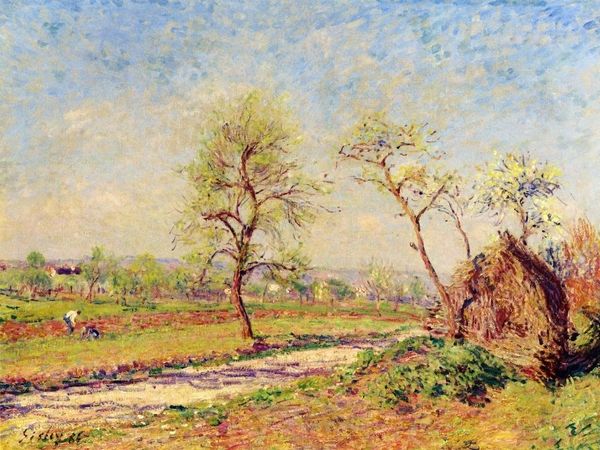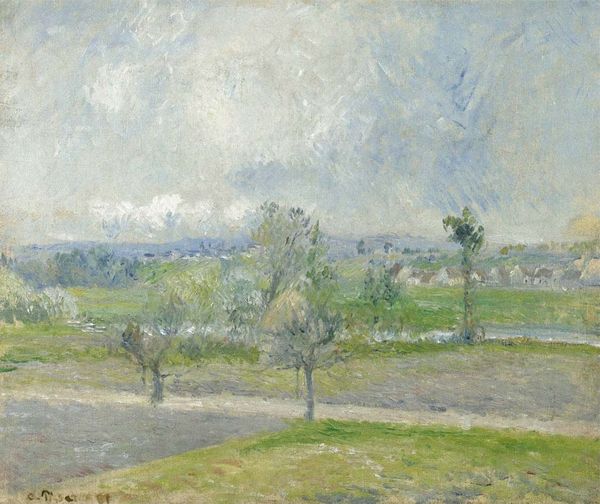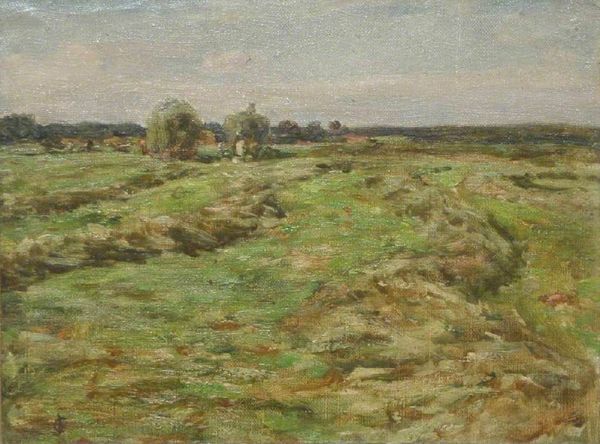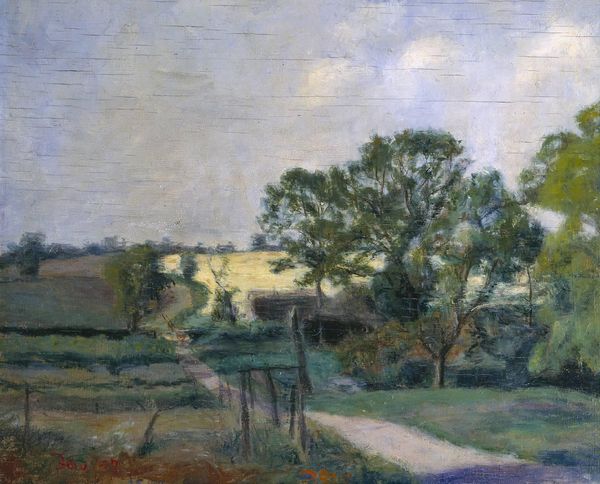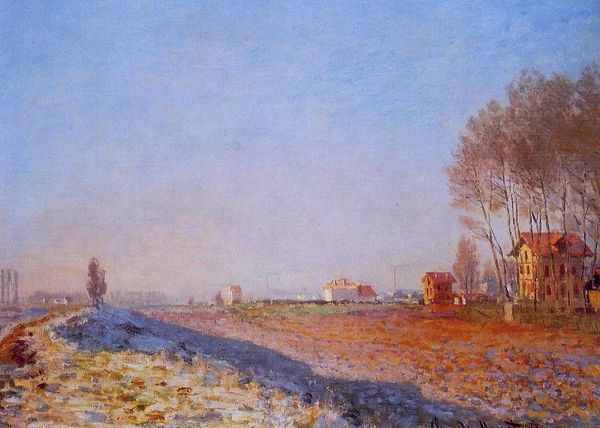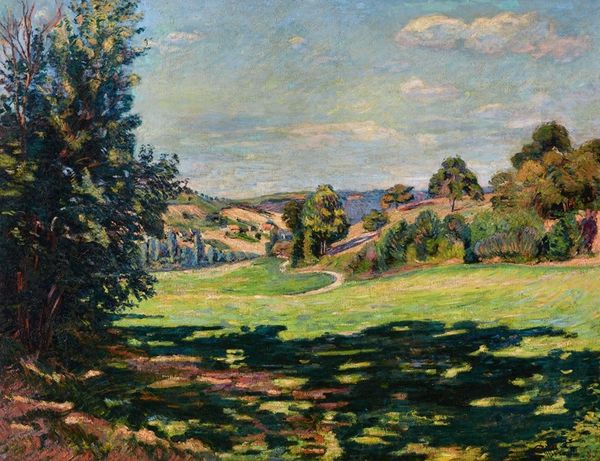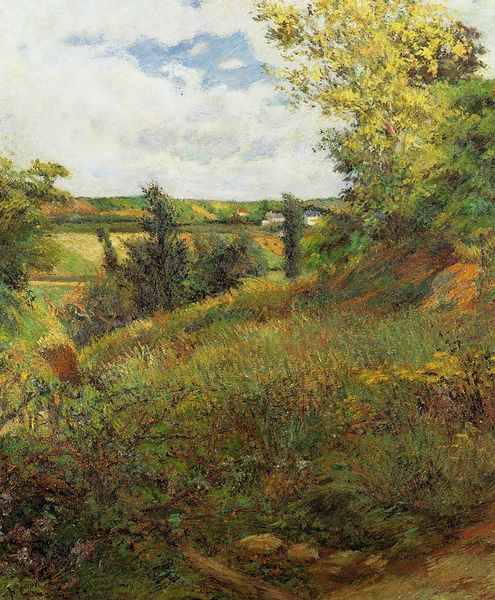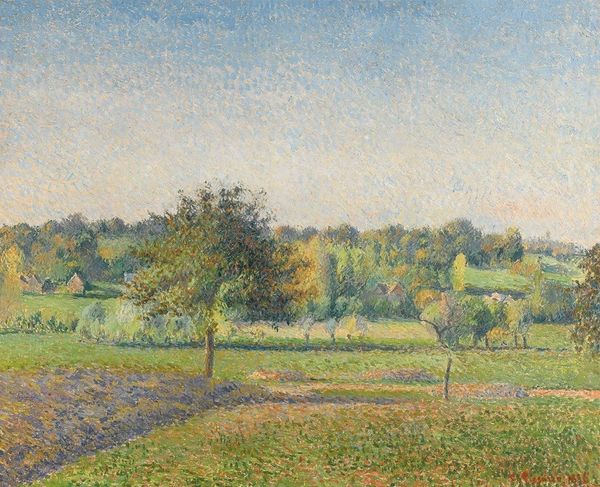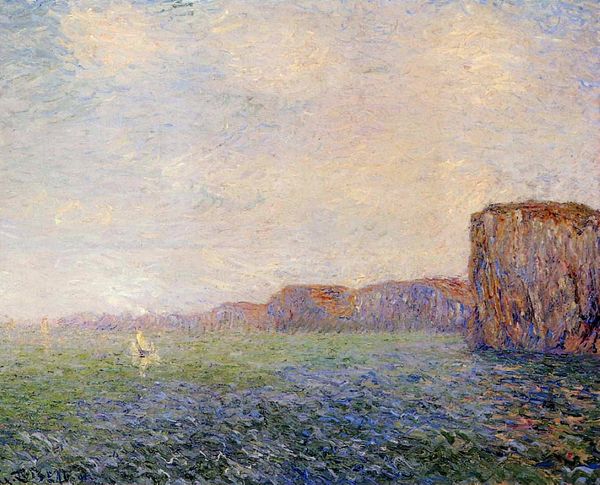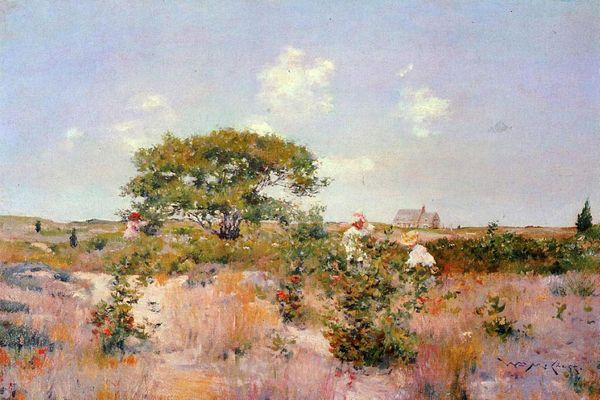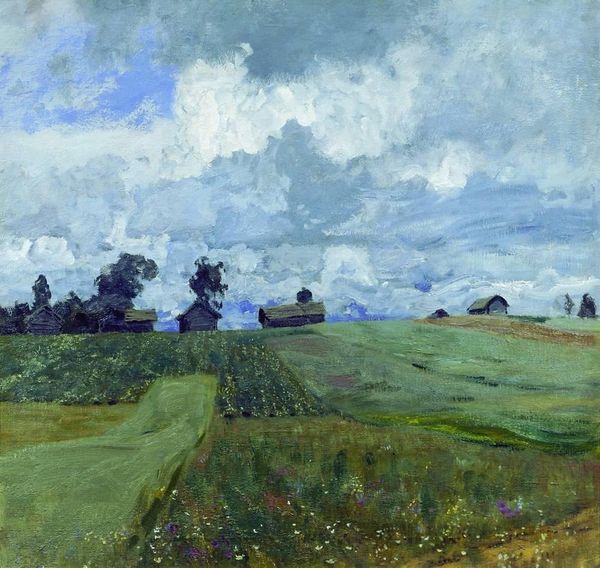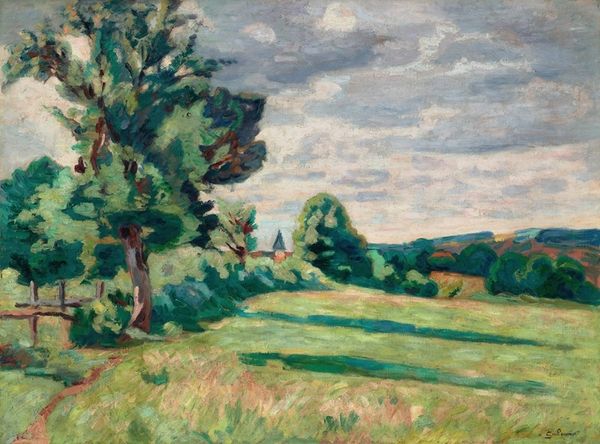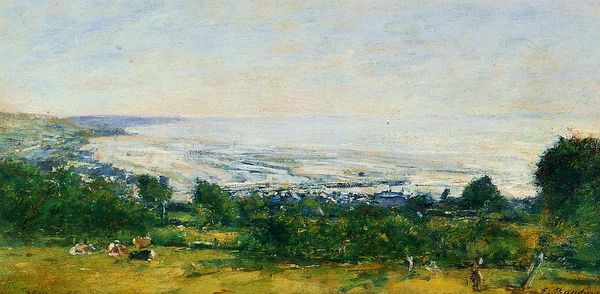
Dimensions: 10 1/4 x 13 15/16 in. (26.04 x 35.4 cm) (canvas)17 1/2 x 20 3/4 x 1 3/4 in. (44.45 x 52.71 x 4.45 cm) (outer frame)
Copyright: No Copyright - United States
Curator: Standing before us is Alexis Jean Fournier's "Chateau Gaillard," dating from around 1913. This work, currently held in the Minneapolis Institute of Art, exemplifies impressionistic landscape painting. Editor: It feels very…airy. Almost weightless. The colors are soft, almost pastel, and that castle melts right into the hillside. There's something very gentle about it. Curator: Indeed. The brushwork is characteristically impressionistic – loose and broken, focusing on capturing the transient effects of light and atmosphere. We can clearly see how Fournier applied plein-air techniques to compose it. Editor: Look at that! So much white paint. And thick impasto. The way it catches the light gives such a tangible sense of material presence. One can imagine the artist contending with wind and sun, recording both a landscape and his sensory experience of the elements. Did you notice the small herd of sheep at the bottom right of the composition? The association with pasture and wool processing feels especially meaningful here. Curator: The sheep function more as repoussoir—visual devices directing the eye back toward the distant focal point of the ruined chateau. This use of recessive depth to establish spatial relations shows Fournier's concern with pictorial organization and structure. Editor: Structure? Perhaps. But beyond formal analysis, it is critical to reflect upon how landscapes become deeply ingrained with political meanings. Fields become agricultural factories. And in this case, the labor implied in their management goes entirely unseen. It's easy to overlook the role of agricultural production in this bucolic scene. Curator: Granted. But from my perspective, it presents us with a rather skillful application of light and perspective. The use of the color palette and brushwork, so subtle in tone and touch, works cohesively to pull the disparate elements of its composition together into a harmonious vision. Editor: Harmony isn’t the word I'd use—there's an anxious transience to how it portrays time. Even those soft colors—those muted greens—they register not tranquility but constant, ongoing processes of change: the work required to keep an idyll idylling. Curator: An interesting reflection. Fournier's engagement with landscape reminds us that, at its core, it invites subjective interpretation. Editor: Indeed. Whether looking at material transformation, labor processes, or impressionistic brushstrokes, art prompts engagement, questions, and hopefully, dialogue, wherever we find ourselves situated in relation to its making and display.
Comments
No comments
Be the first to comment and join the conversation on the ultimate creative platform.
